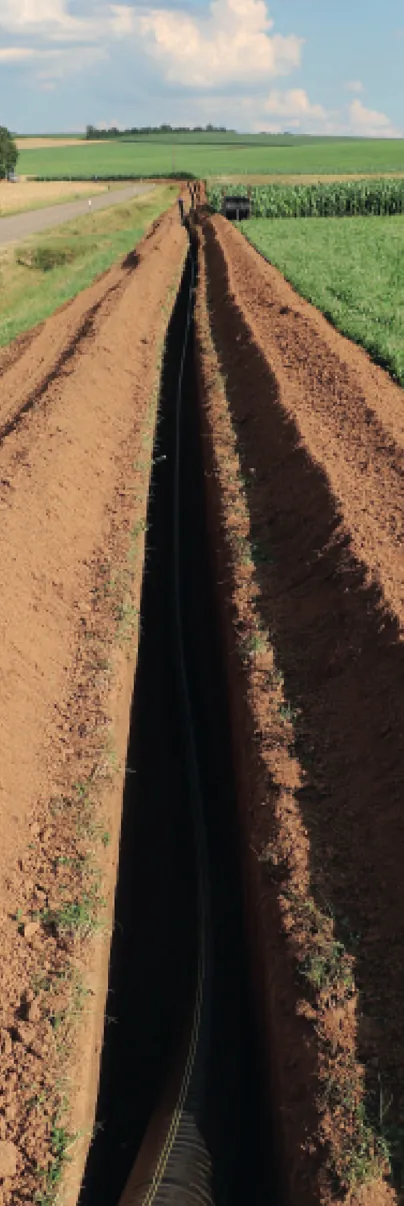
29/09/2025 0 Comments
FibreFLEX: The Hidden Hero Behind Pfofeld’s Village Heating Revolution
When the Bavarian village of Pfofeld set out to build a district heating network, the goal was clear: reduce dependence on oil and gas, lower heating costs, and use local renewable resources such as wood chips and waste heat from biogas plants.
But one major obstacle stood in the way: how to transport hot water under high pressure across steep hills at a reasonable cost. The solution came with FibreFLEX pipes, a groundbreaking technology that made the entire project possible.
The Challenge: Hills, Pressure, and Cost
Pfofeld sits in the rolling landscape of Middle Franconia. To connect 126 households, restaurants, and community buildings, the heating network had to climb and descend hills with height differences of up to 46 meters. That kind of elevation change creates enormous pressure in the pipes. Traditionally, steel pipes would have been the only option—but they’re expensive, heavy, and complicated to weld every 12 meters. For a network stretching several kilometers, the price tag would have skyrocketed.
This is where FibreFlex changed everything.
FibreFLEX is a plastic pipe reinforced with aramid fibers (the same material used in bulletproof vests). This innovation allows it to handle pressures of up to 10 bar at temperatures as high as 95°C—exactly what was needed for Pfofeld’s heating system.
Here’s what made FibreFLEX so crucial:
- Strength Without Steel
FibreFLEX could withstand the extreme pressure from the 32–46 meter elevation differences without needing costly steel pipes. - Cost Savings
By avoiding steel, the project saved massively on both material and installation. FibreFLEX can bend around obstacles, meaning fewer joints, less welding, and lower labor costs. - Efficiency Boost
With FibreFLEX, the heat transfer capacity jumped from 250 kW to 400 kW. That meant Pfofeld could use the full output of local biogas plants, especially during spring and autumn when households still need heat but the biogas process produces extra energy. - Future-Proofing
The flexible, durable design means the network can adapt and expand as new households or energy sources connect.
Beyond Technology: What It Enabled
Thanks to FibreFLEX, Pfofeld didn’t just build a heating system—it built energy independence. Today, the village enjoys:
- Stable, low heating costs (just 5.5 cents/kWh).
- Freedom from volatile oil and gas markets.
- A system that uses local wood chips and waste heat that would otherwise be lost.
- An economic model where investment stays in the region, supporting local jobs.
- Without FibreFlex, the project might have been too costly, too complex, or too limited in capacity. With it, the village turned a dream into a functioning, sustainable energy network.
Big transitions often rely on small heroes. In Pfofeld, the real star wasn’t just the biogas plants or the wood chip boilers, it was the FibreFLEX pipe that made it possible to stitch everything together affordably and efficiently.
Pfofeld’s story is a reminder that sometimes, the quietest innovations make the loudest impact.


Comments
Leave a comment